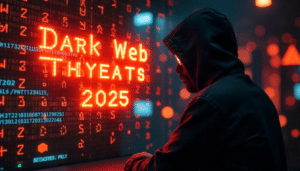Introduction
The business community has a bigger and bigger number of cyber hazards as the digital world develops very fast. Organizations are under constant threat from hackers and data theftsters. Threat detection and response systems are key defense mechanisms and are essential for protecting organizations against these risks. This article highlights the critical role of these systems in the protection of businesses and the reason behind their existence in the modern cybersecurity strategies of today.
Understanding Threat Detection and Response
Threat Detection and Response are security methods or strategies for identifying, analyzing, and antibiotic prevention technologies against IT-based threats. It includes the consistent supervision of a company’s network and devices to pick up the tricky tasks and lower the reaction time to attack in a timely manner.
Key Components of Threat Detection and Response
- Continuous Monitoring
- Threat Intelligence
- Automated Alert Systems
- Incident Response Plans
Benefits of Implementing Threat Detection and Response
Implementing threat detection and response systems is undoubtedly one of the beneficial moves for businesses. They contribute to a business by frequently and unexpectedly carrying out the following functions:
- Early Threat Identification
- Reduced Dwell Time
- Minimized Damage from Attacks
- Improved Regulatory Compliance
- Enhanced Overall Security Posture
Common Threat Detection Techniques
Prevention of threats involves several procedures such as:
- Signature-based Detection
- Behavior-based Analysis
- Machine Learning and AI
- Network Traffic Analysis
The Importance of Rapid Response
Threat sensing is the first step in crisis negotiation and response. The second part of the process is to act fast and respond effectively in order to mitigate the damage caused and prevent further such situations. This part will focus on the need for organizations to have an incident response plan and team in place.
The Challenges in Threat Detection and Response
Despite being necessary, strategic threat detection and response implementation come with their fair share of challenges:
- False Positives
- Skills Gap
- Evolving Threat Landscape
- Resource Constraints
Best Practices for Effective Threat Detection and Response
In the OT area of the industry, it is very important that a business should follow these steps:
- Regularly Update and Patch Systems
- Conduct Employee Training
- Implement Multi-layered Security
- Continuously Assess and Improve
- Leverage Automation and AI
The Future of Threat Detection and Response
As with the evolution of technology, the threats and defenses in cybersecurity keep changing and diversifying. In this regard, the article shall be dealing with the latest trends in technologies such as AI, cloud-native security, and XDR.
What is the difference between threat detection and threat response?
The process of finding the possible causes of threats to the proper systems, which is the way to security through threat detection is threat detection, while the detection method which is the conditions management is called threat response.
How often should a company update its threat detection systems?
Upon detection, companies shall integrate as much data as possible to their systems not necessarily just on a quarterly basis but routinely. It is important to update the software, run patches, and create new security rules to reduce offensives and embrace these methods gradually.
Can small businesses benefit from threat detection and response systems?
Yes, even the smallest enterprises can protect themselves with the help of threat detection and response systems. Whether an enterprise is large or small, it may encounter similar threats, but such may differ in scale. However, all of them can be addressed.
What role does employee training play in threat detection and response?
The first part here is the importance of training as an essential element for serious security measures. There is no single way to do this but constant reminders of passwords, the awareness of employees through the performance of the various types of attacks, the clarity of the different typologies of attacks that so much out there, and their offering will effectively fight off the process of social engineering.
How does artificial intelligence (AI) enhance threat detection and response?
A.I. speeds up the process of threat detection and response. It can analyze a massive amount of data in little to no time. It finds patterns and allows companies to take preventive measures. It can even deal with the security team.
Conclusion
Nowadays the most advanced companies in the world are those that implement threat detection and response systems. They are the ones that are completely safe and they can identify the loopholes and close them without any harm before any blunder is detected. The Systems where the first strategy is to educate, then the best practices are encouraging the staff to follow, the companies can gain the benefits of the systems to protect their integrity, ensure that its asset is safe, maintain the customers’ or peers’ trust, and the working process continues.



